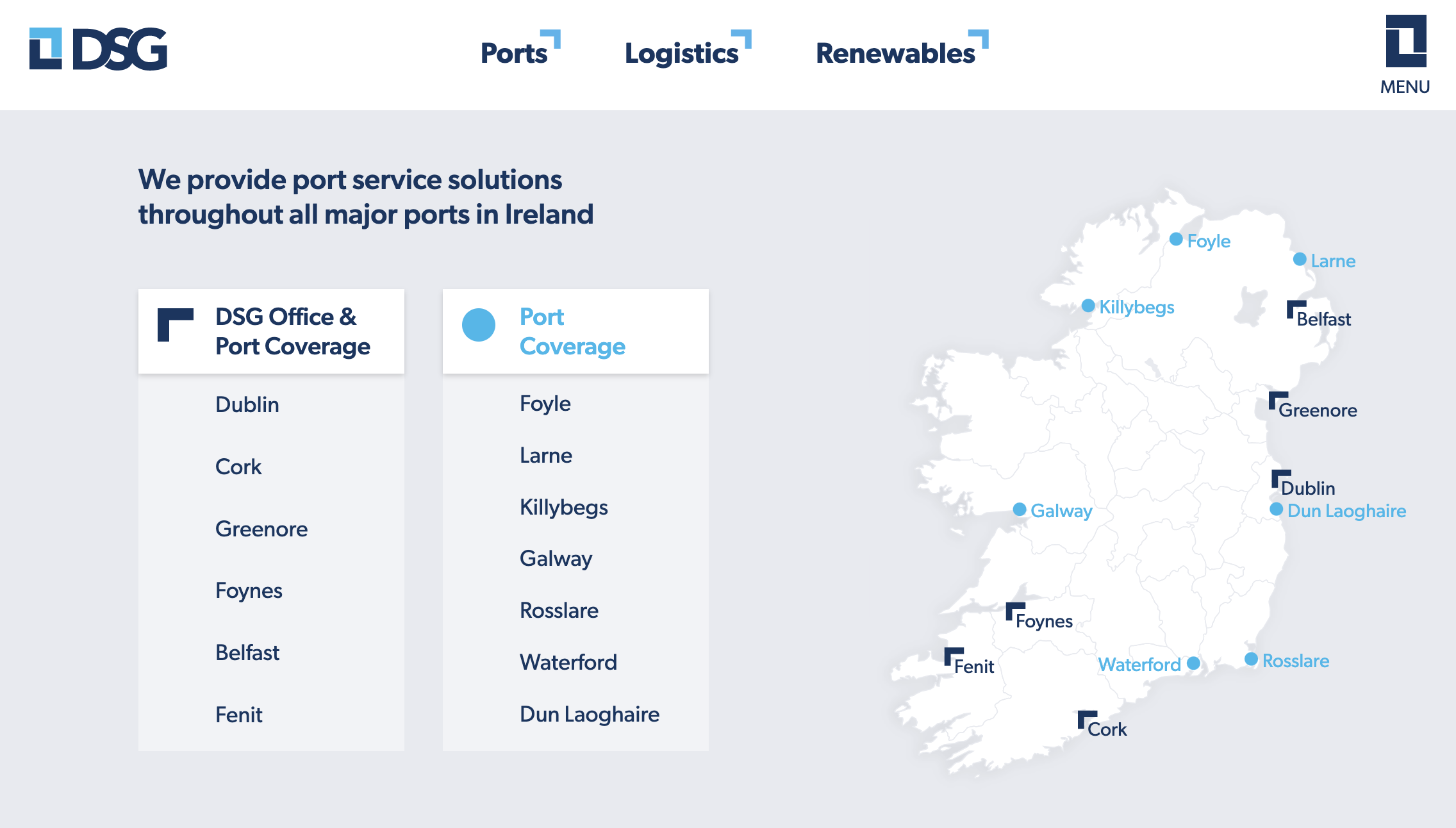-

-
Intro
-
Doyle Shipping Group is Ireland's Leading Shipping & Logistics Company. They provide port service solutions throughout all the major ports in Ireland and have been in business for over 130 years. Niall McCarthy runs one of their ports - Greenore, the only deep water port outside of Dublin on Ireland's east coast.
-
In Their Words
-
"Our Port Agency service handles a huge amount of information on the ships that we process, most of which had been stored in excel documents, physical documents, and email chains.
-
We wanted to digitize the way we manage ships, and build a system that can handle storing of information, automatic creation of PDF documents, e-signatures, automated emails. We also needed a robust checklist system that lets us track exactly what stage our ships are at, and what remains to be completed. Additionally, we wanted to integrate this with our financial system and scheduling system to remove any duplicate data storage and reduce the operational and maintenance overhead."
-
The Engagement
-
As soon as we began speaking to DSG, two things were clear: 1. That Niall had a pretty clear vision for what the new system would encompass, and 2. That this vision would be quite large in scope.
-
One of the key requirements was that the software was "backwards compatible" and acknowledged the existing processes and practices within the industry. In other words, rather than trying to replace PDF files altogether, we were able to cleverly ingest these files as templates, and automate the creation and sending of them while still keeping everything in a single system.
-
Timeline
-
Discovery & Commercials - One month. We had our first call with DSG on June 21. After 2 more discovery calls, we presented a proposal, which was agreed and signed by July 20th, with work scheduled to start on August 8th. The work was separated into two parts - an initial 6 week project of known scope, followed by a rolling monthly engagement. This pricing structure was fixed enough to ensure value was delivered (the 6 week project was a standalone product, and DSG had the option to walk away after those 6 weeks), but flexible enough to allow for a longer-running partnership on the larger software system of unknown scope that would need to be built iteratively.
-
Week one and two: Technical foundations, full fidelity spec of Feature Set A
-
During this period, our Team Lead AJ and designer Nirob worked on completing high fidelity specs for the first product/feature set, while our developers worked on building out the technical underpinnings (codebase, infrastructure, known domain models). The finished user-facing designs (not including the internal screens) can be seen here.
-
Weeks Three to Five: Build, Discovery
-
Two things happened during this period: Firstly our dev team built out Feature Set A (which had been designed in the previous two weeks) to completion, including the user-facing wizards, internal screens, ensuring it was fully mobile-optimized, and handing edge cases with file uploads.
-
Additionally, AJ and Tony used this time to do a deeper dive on the business, including more calls and a half-day site visit, which culminated in several documents and assets covering how the business and customer journey fit together end to end. Below you can see the low fidelity wireframe which was produced, which covered around 80% of what would become the larger system.
-
Week Six: Testing and rollout, planning for next phase
-
This week was devoted to ensuring the Feature Set that had been built was suitable and complete. We gathered feedback, tweaked some of the details, and pushed it live. Additionally, at this point DSG were very happy with the work we'd done and eager to continue, so we made plans for what would be worked on in the following sprints, breaking the work in the diagrams down into smaller pieces and scheduling them for the following
-
Ongoing Work
-
Tonic and DSG are still working together today, on an ongoing basis. It's been 7 months since our first sprint, and we've built a large amount of the system as outlined above. We continue to build incrementally and ship new releases regularly.
-
Review
-
Niall from DSG gave a comprehensive review of the work carried out so far on Clutch - you can read it here (excerpt below)
-

Work
Case Study: Doyle Shipping Group
